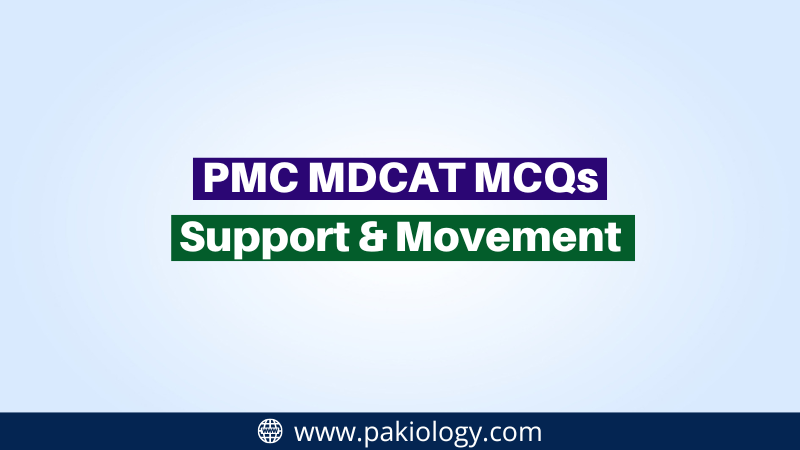The MDCAT test measures your ability to work in the field of medicine and apply the knowledge you learn in your classroom to real-world situations, so it’s important to not only study hard but also take practice tests and assess your knowledge based on the subject matter of support and movement. In this article, we’ve compiled a few examples of MDCAT MCQs on support and movement that will help you determine whether or not you’re ready to take this potentially career-changing test!
Page Contents
Cartilage
Cartilage is a tough, flexible material that covers the ends of bones where they come together. The cartilage functions to decrease friction and allow smooth movement. There are two types of cartilage in the human body – hyaline or articular. Hyaline Cartilage has an elastic quality and provides support for things like your nose, windpipe, and ear canal. Articular Cartilage on the other hand has a more rubbery feel to it which makes it able to withstand more pressure.
Types of muscles
These are the muscles that act on joints and produce movement.
-Muscles that cross two joints (e.g. biceps) -Muscles that only cross one joint (e.g. hamstrings) -Intermuscular muscles (e.g., adductors) -Endomuscular muscles (e.g., long head of triceps). The term fascia is used to describe a sheet of connective tissue that is made up primarily of collagen and provides support for structures like a muscle. Some types of fascia include fascia lata, which supports the thigh muscles; fascia course, which supports the lower abdominal muscles; and fascia cava, which lines internal organs in your abdomens like your liver or kidneys.
Structure of skeletal muscles
Skeletal muscles are responsible for most movement in the body. Muscles can be divided into three types, based on where they attach to the bone and how they contract:
The majority of skeletal muscles are voluntary, which means that a person has conscious control over their movement. Examples include biceps and triceps on the arm, rectus abdominis and erector spinae in the abdomen, and deltoids in the shoulder.
Mechanism of skeletal muscle contraction
Skeletal muscle contraction is a complex process that involves the sliding action of myosin and actin filaments. The sliding motion moves the two filaments together, bringing about a change in the shape or alignment of the sarcomeres. This sliding motion is triggered by an influx (influx) of calcium ions into the cell, which causes cross-bridging between protein units on both ends.
Types of joints
The four types of joints are synovial, cartilaginous, fibrous, and sutural. Synovial joints are the most common type. They allow for a wide range of movement and provide support for the weight of the body. Cartilaginous joints also allow for a wide range of movement but do not provide as much support as synovial joints. Fibrous joints are often found in the spine and hold together two different parts that cannot move freely on their own.
MCQs On Support & Movement
Here are the MCQs from the PMC MDCAT on Support & Movement.
- Chapter: Support & Movement
- Total MCQs: 128
Time’s Up
Total Questions:
Attempt:
Correct:
Wrong:
Percentage:
Ask Your Questions
YOU MIGHT LIKE
KMU MDCAT Test 2023 PDF | Download Free
Download Today MDCAT test in Pdf For free. Get KMU MDCAT test 2023 Pdf Question paper with answer keys. KMU MDCAT test...
UHS MDCAT Past Papers Pdf 2008-2020
The University of Health Sciences (UHS) Lahore was a conducting body for the Medical and Dental College Admission Test...
MDCAT Quick Notes For PMC MDCAT 2023
The MDCAT exam, which stands for Medical and Dental Colleges Admission Test, was first introduced...
MDCAT PMC Paid Practice Tests | Download In PDF
The Medical College Admission Test, or MDCAT, is a standardized test required for admission to all medical colleges in...



I want to practice for mcqs